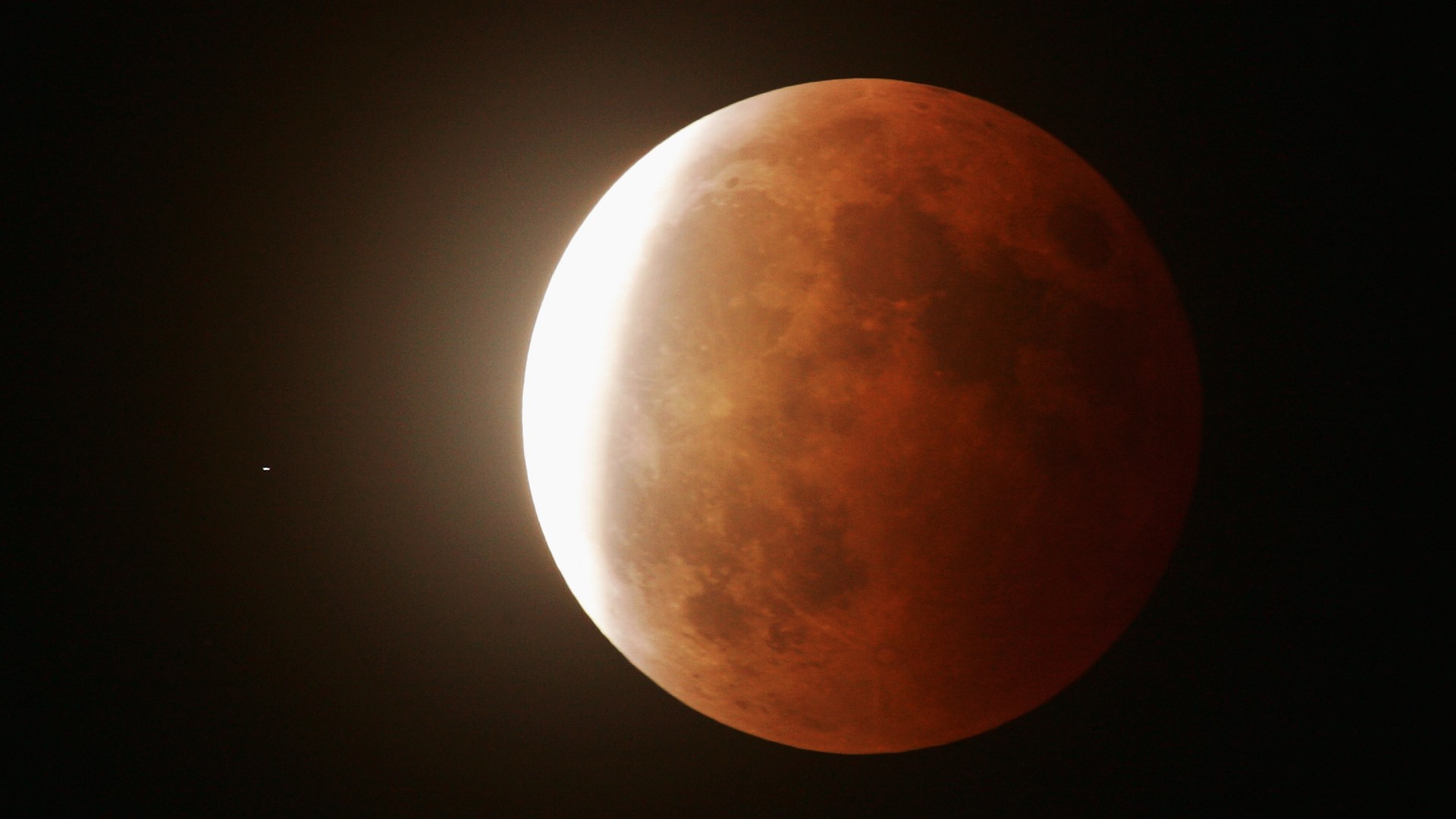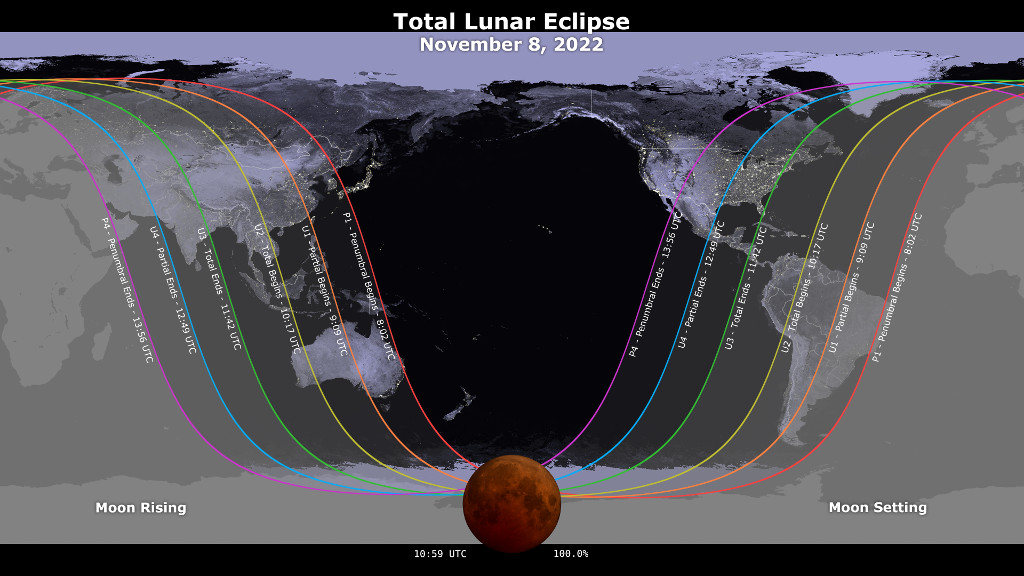Last total lunar eclipse until 2025 rises on Tuesday, Nov. 8. Here's how to watch.
The moon will pass through the darkest part of Earth's shadow for nearly 90 minutes on Tuesday, but only viewers in part of the world will be able to see it.

On Tuesday, Nov. 8, the full Beaver Moon will pass into the darkest part of Earth's shadow for nearly 90 minutes in the final lunar eclipse of 2022 — and the last total lunar eclipse until 2025, according to NASA.
At least part of the lunar eclipse will be visible throughout East Asia, Australia, the Pacific and North America. Viewers in the United States and Canada will need to rise bright and early to catch the show, as the first phase of the eclipse will begin at 4:09 a.m. EST (0900 GMT).
The peak of the eclipse — known as totality, when the entirety of the moon's visible surface is shrouded by Earth's shadow — will occur from 5:16 to 6:43 a.m. EST (1016 to 1143 GMT) and then slowly brighten as a partial eclipse for the following hour, according to NASA.
The next total lunar eclipse will not occur until March 14, 2025.
Related: What is the moon phase today?
Every 30 days or so, the sun, Earth and the moon align on an invisible 180-degree line, resulting in the full moon. Because the moon's orbit around Earth is slightly tilted relative to Earth's orbit of the sun, the full moon usually dodges Earth's shadow while still catching the sun's light. During a total lunar eclipse, however, the moon moves directly behind Earth relative to the sun, briefly falling into complete shadow.
Get the world’s most fascinating discoveries delivered straight to your inbox.
During the climactic totality phase of an eclipse, the darkest part of Earth's shadow — called the umbra — falls over the center of the moon. You might expect the moon to go totally black during totality — but actually, it takes on a red, rusty hue, which is why it's often called a Blood Moon.
A phenomenon called Rayleigh scattering causes this rusty hue; essentially, when sunlight collides with Earth's atmosphere, blue light gets scattered while red light is refracted, or bent, around the planet until it lands on the moon. This gives our eclipsed satellite a ghostly, reddish hue as it sits within Earth's shadow. The precise level of redness on a fully eclipsed moon depends on atmospheric conditions over Earth, including the effects of volcanic eruptions, dust storms and wildfires, according to NASA.
For a detailed chart showing when you can catch the different stages of Tuesday's eclipse in various time zones, check out this handy NASA page. You don't need any special equipment to view the Blood Moon, though binoculars or a telescope may enhance your view of the year's final lunar spectacle.
Live Science would like to publish your total lunar eclipse photos. Please email us images at community@livescience.com. Please include your name, location and a few details about your viewing experience that we can share in the caption.

Brandon is the space / physics editor at Live Science. With more than 20 years of editorial experience, his writing has appeared in The Washington Post, Reader's Digest, CBS.com, the Richard Dawkins Foundation website and other outlets. He holds a bachelor's degree in creative writing from the University of Arizona, with minors in journalism and media arts. His interests include black holes, asteroids and comets, and the search for extraterrestrial life.



